I am taking a stroll on our hotel terrace. It has beautifully carved domes, three on each of four sides and its abundant with artistic Chittar stone (sandstone) work which you will find only in Rajasthan.. it’s quite breezy here.
Jodhpur never struck me as a tourist destination (For it doesn’t have a beach!) until my husband brought me here for our 6th anniversary. I had little expectations from this place. Since I was here, I was ready to take all it had to offer.. who knew then I was going to discover something wonderful for myself.
It’s our last day here in Jodhpur. Evening rather. And I am going through the last four days in my mind to make up what I liked the most here. It’s the heritage or the food or the people or the art..
Our driver picked us up at the train station early in the morning. We were hungry. On our way to Jhalamand village where our hotel was, he stopped at a local sweet shop for the breakfast. Shop had been just opened and busy getting ready to serve. Our driver suggested to try “Mirchi wada” – local speciality with one whole green chilly in the middle and onion, potato stuffing around with covering of besan floor. While our mirchi wada was getting fried, we ordered “mawa kachori“. Rajasthan is famous for Kachoris. This one is special and served with sugar dip. Tastes sweet. mirchi wada was ready, piping hot and spicy! Our day began on a sumptuous note!
There is of no dearth of houses, buildings and structures with intricate sand stone (famously known as Chittar patthar) works in Jodhpur. But I have found finest examples of them in Mandore, 15km away from Jodhpur. Historically its an abandoned capital of erstwhile princely state of Marwar before Rao Jodha moved it to Mehrangarh and thus founding city of Jodhpur. Mandore now houses cenotaphs (temples or devals) built to commemorate deceased rulers of Marwar by their successors, right from 15th century till 19th century. All of these temples are constructed using Chittar stone and are well-known for their high rock terraces. Size of the temple and variations in the design and intricacies of the stone carvings grew exponentially with every temple and century-wise. Temples are empty, no idols. Just the symbol of presence of the deceased king and his opulence.
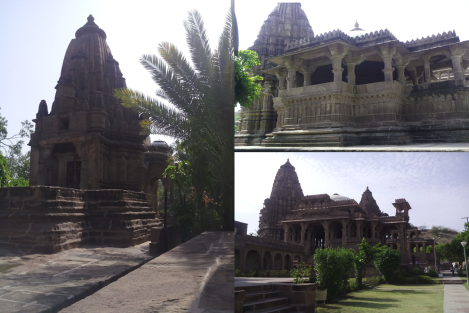
Not too far from Mandore, in Osian village, starts the Thar desert. It’s home not to many but surely to the camel rides and jeep safaris. Place also makes up for a good sunset point. My son enjoyed playing in the sand and riding a camel while we loved watching him and the beautiful sunset.
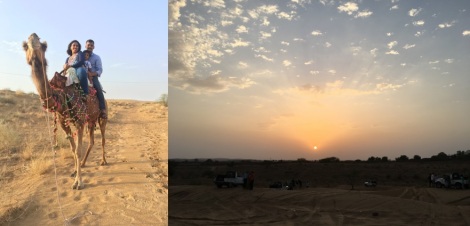 Our hotel in itself is a Haveli like in old times and every nook and corner is beautifully decorated with murals, coloured glass, and stone carvings. It’s worth living like a queen, sometimes. I just wish I had those costumes. It would’ve been perfect! Isn’t it?
Our hotel in itself is a Haveli like in old times and every nook and corner is beautifully decorated with murals, coloured glass, and stone carvings. It’s worth living like a queen, sometimes. I just wish I had those costumes. It would’ve been perfect! Isn’t it?
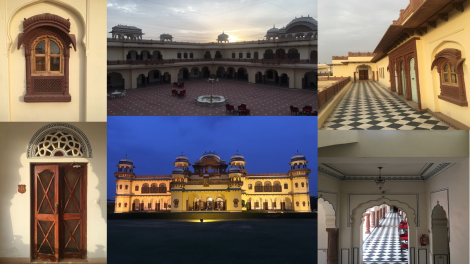
Another place I instantly fell in love with is the magnificent Mehrangarh fort and all blue Jodhpur city. The sprawling fort is well maintained and has a lift available to reach to its top. This not just makes it accessible to paraplegics, senior citizen, pregnant women or women with child but also makes it easy and fast for all those on a short trip.
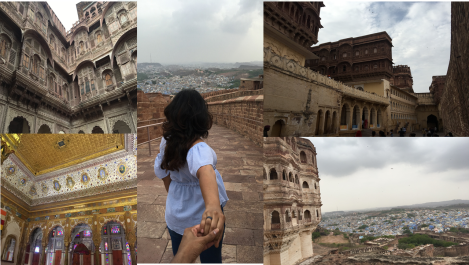
Exit Mehrangarh. From it’s security point make right and descend onto the curvy slopes.. Into the city that is – Antique. Blue. Indigo. Walk down the small alleys till the clock tower(Ghantaghar).

Most of the population is vegetarian here. Being pure vegetarian, first time in my entire tourist life, I am quite satisfied here. There is no dearth of vegetarian delicacies. From daal baati churma to gatta curry to pappad ki subzi to ker saangri to dahi kadhi to sweets like rabadi ghevar, I ate my fill. Non-vegetarians are not left alone. Jodhpur is famous for its ‘Lal Maans’ (lamb) dishes.
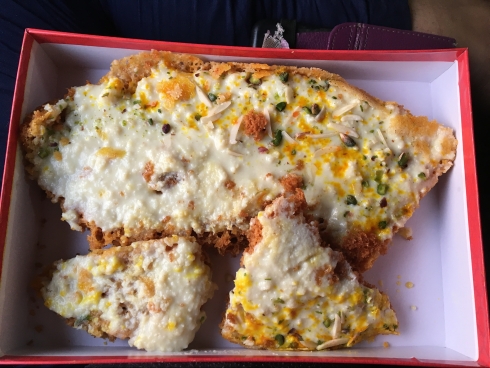
Rabdi ghevar
Almost every general store in and around Jodhpur sell homemade bottled chaans (buttermilk). Most of the people here drink it in place of water.
Amongst all the forts and palaces, Umaid palace is decidedly different and quite ‘English’ as it is designed by the architectural firm Lanchester and Lodge in London. The palace is perfect amalgamation of Beaux Arts style and a blend of eastern and western architectural styles. Only a small portion of the palace, converted into museum is open for public visits. Part of the palace is used by Taj hotels. Rest of the Palace is occupied by it’s owner maharaja Gaj Singh (grandson of maharaja Umaid Singh) and the royal family. Palace also houses vintage cars from 1926 to 1947.
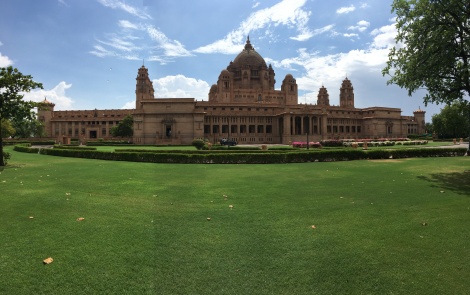
Its getting dark here now and I can hear the peacock sing in the distance, calling out to his female partner. 🙂 Its been everyday thing now, tomorrow it won’t be.. For I shall leave this place and get back to my own routine and look forward to my next trip may be. I can’t make up my mind still… of all this, what I liked the most! What do you think?
